As their traditional dining options dwindle and natural areas give way to restaurants, homes and sidewalks, the coyotes of San Francisco are shifting what they eat.
Scientists from the University of California, Davis, wanted to understand what San Francisco’s coyotes are eating, and how their diet is changed and shaped by the city’s landscape, which can vary from block to block.
Their study, published in the journal Ecosphere, found that the number of restaurants and amount of pavement or “impervious surfaces” within the city heavily influenced what the coyotes ate. Coyote consumption of rats was highest where restaurant density was highest, and consumption of human-sourced food was highest in the most heavily paved parts of the city.
The findings can help inform and prioritize management strategies to protect native coyotes and reduce human-wildlife conflicts.
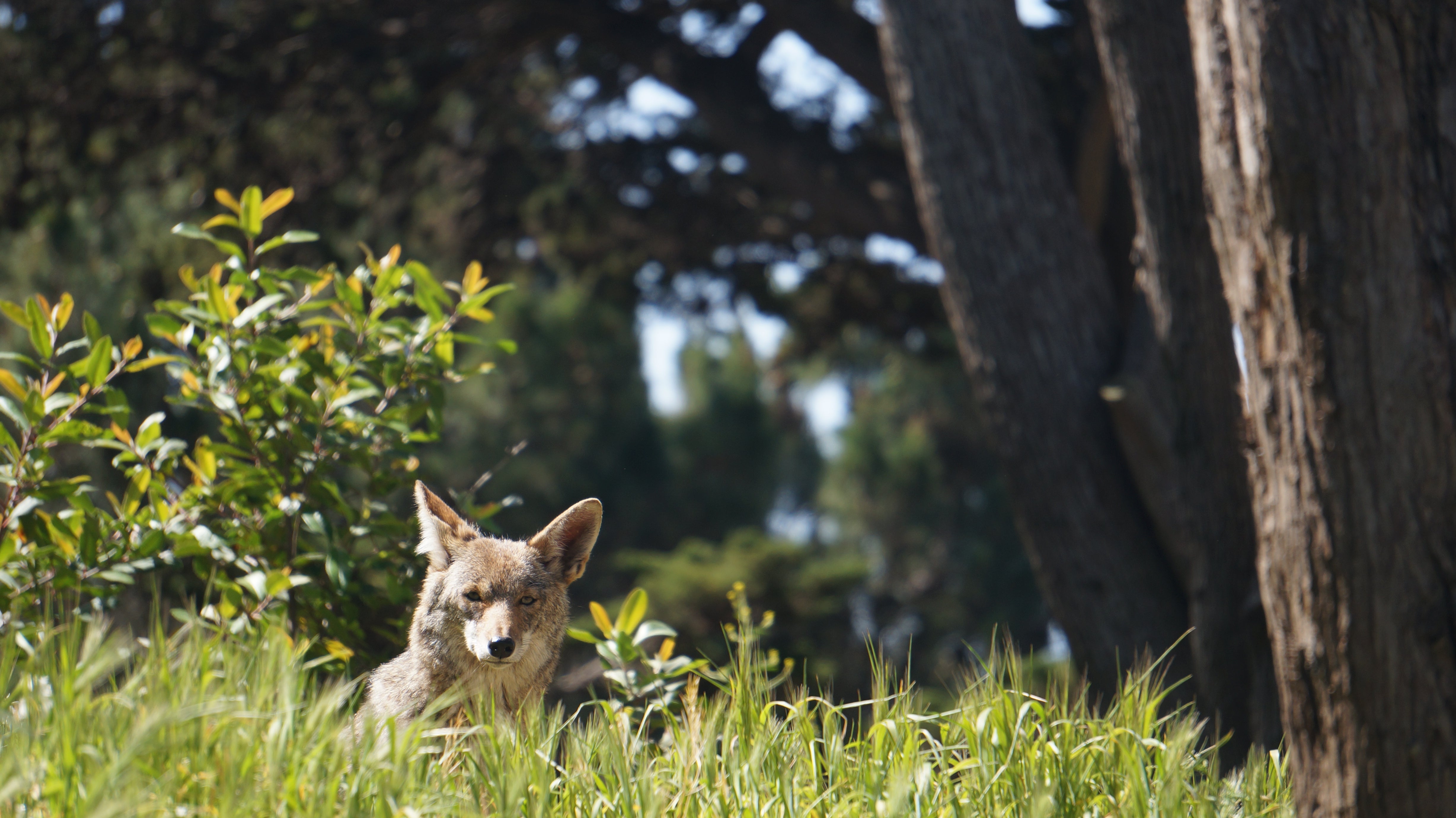
What San Francisco’s coyotes are eating
So what are coyotes eating in San Francisco?
“A lot of human-provided food,” said lead author Tali Caspi, a Ph.D. candidate with the UC Davis Department of Environmental Science and Policy and with the UC Davis School of Veterinary Medicine’s Mammalian Ecology and Conservation Unit (MECU). “Chicken is a really big diet item; we found it in 72% of the scat samples analyzed in the study.”
However, a natural prey source, pocket gophers, comprised the next most popular food source, found in about 57% of the scats collected, followed by pig (human-sourced) and racoon (natural). While some people have expressed concern about coyotes eating cats, felines were rare in the dietary analysis, detected in 4.5% of samples.
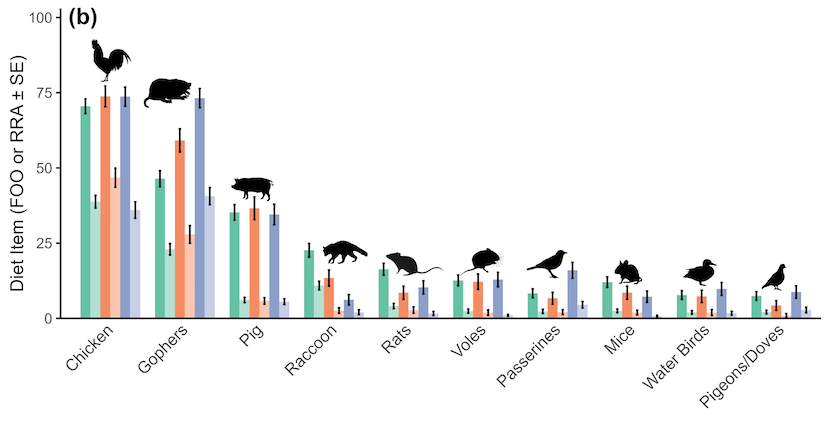
Scat and DNA analysis
To reach their findings, the authors collected more than 700 coyote scat samples from throughout San Francisco between September 2019 and April 2022. They brought them to UC Davis for lab analyses at MECU, within the Veterinary Genetics Laboratory. Genotyping matched fecal samples to individual coyotes, while DNA metabarcoding quantified diet composition.
Caspi notes that while the analysis reveals food sources, it does not differentiate among, for example, a backyard chicken, takeout from a dumpster or chicken found in pet food.
The research also showed that coyotes in more urbanized parts of the city, such as Telegraph Hill near Coit Tower or Bernal Hill, ate more human-sourced food than coyote neighbors with more green space, such as in the Presidio or Golden Gate Park.
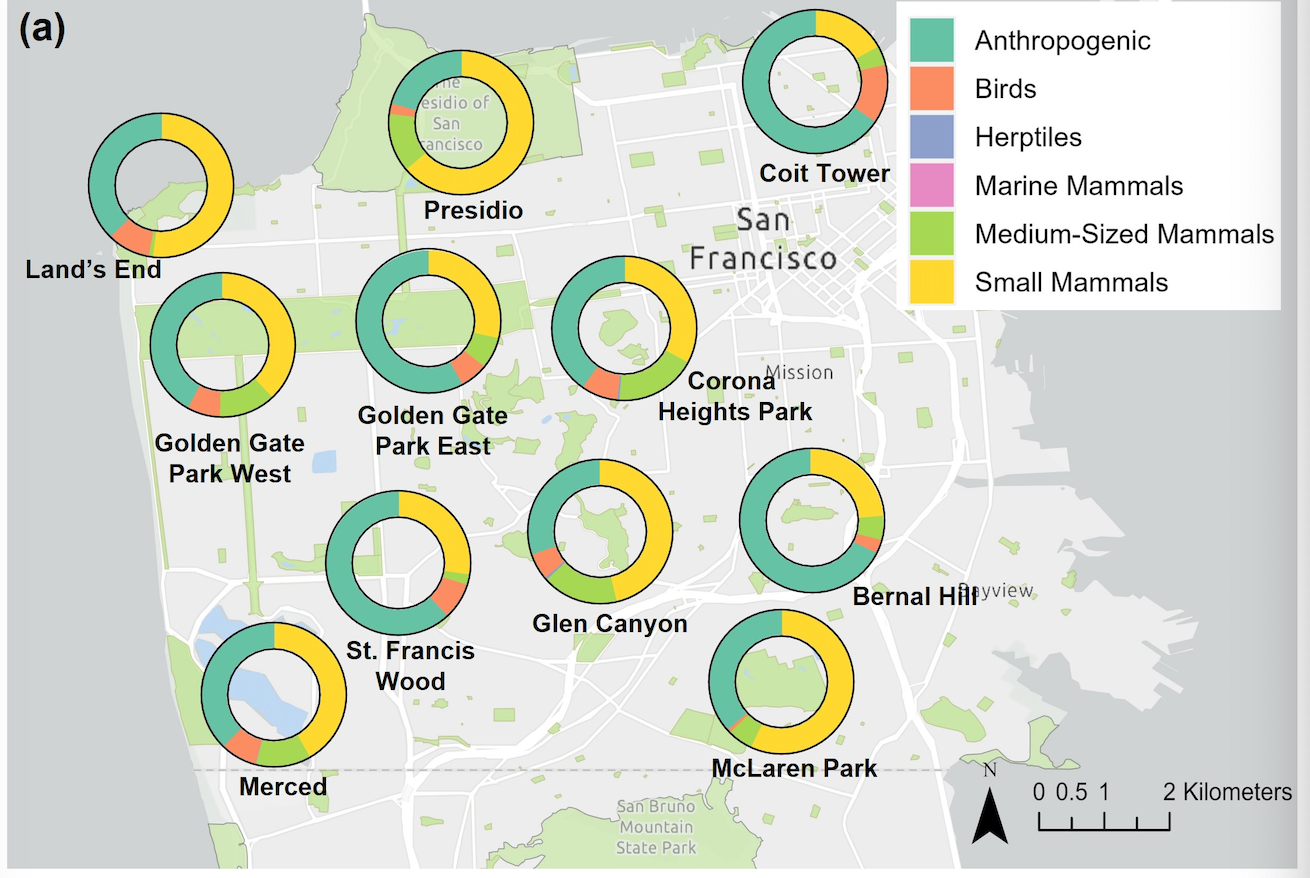
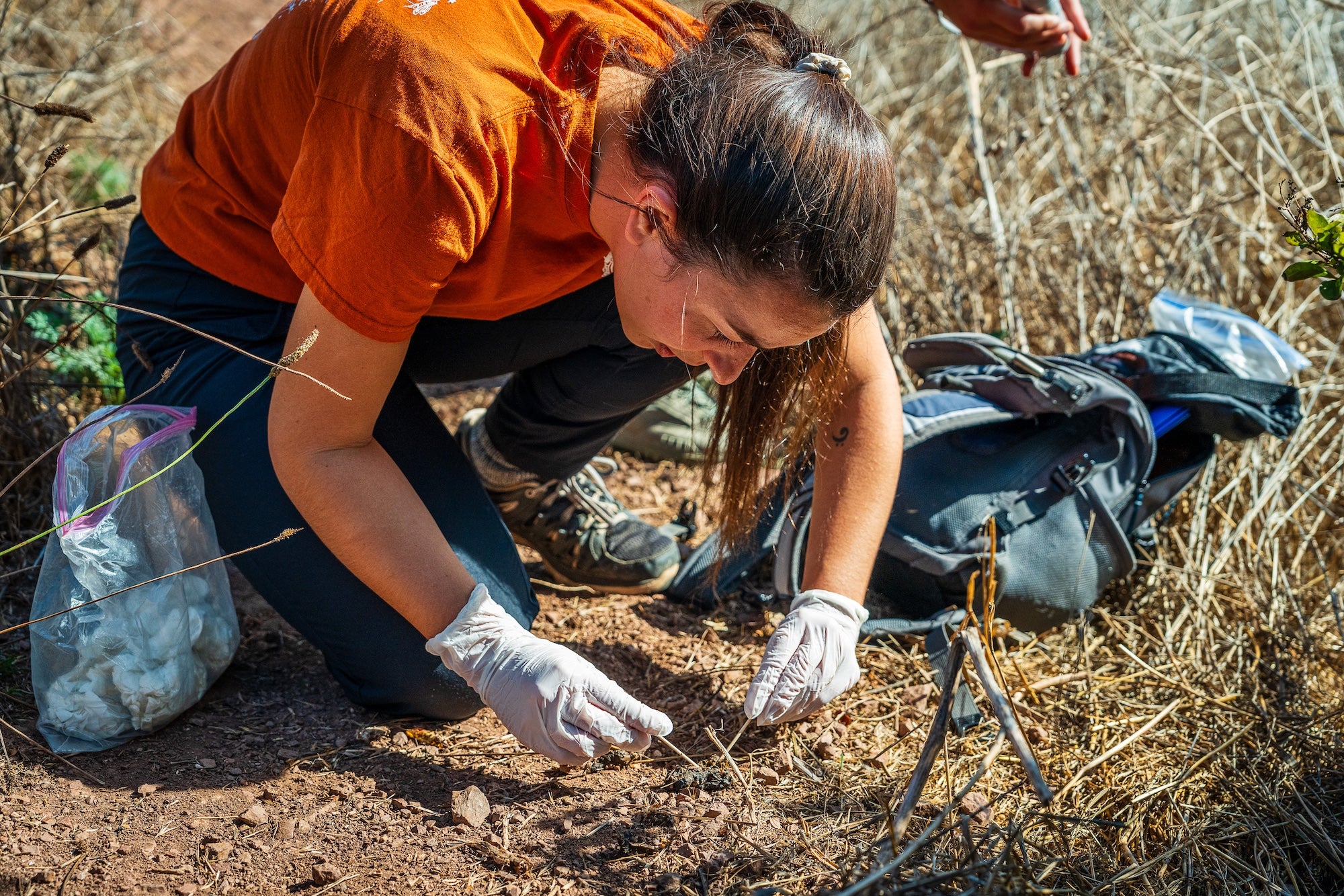
The scientists also observed that diets among coyote family groups were highly varied, while diets among members of the same family varied little.
“This study highlights the huge range of dietary and habitat affinities of coyotes as a species,” said senior author Ben Sacks, director of the MECU at UC Davis. “That is a trait for which they are already well-known, but the study also joins a growing body of evidence pointing to relatively narrow proclivities of coyotes as individuals. They tend to stick with what they know.”
Living among coyotes
Coyotes are native to San Francisco. Extirpated in the early 1900s, they returned in the early 2000s and now share space with more than 870,000 people on 47 square miles — the second-most densely populated major city in the United States — with water on three sides.
There are many things people can do to respectfully share space with coyotes and reduce human-wildlife conflict. This includes keeping cats indoors, not leaving pet food outside, securely disposing food waste and, perhaps most importantly: “Don’t feed coyotes,” Caspi said. “There’s a misconception that coyotes are starving and need our help finding food in San Francisco, and clearly they don’t.”
Coping with urban life
From song sparrows in Portland, Oregon varying their song frequencies to cockatoos in Australia opening trash cans, the study joins the body of literature showing behavioral differences within cities among the same species.
“There are a lot of different ways to survive city life as an animal,” Caspi said. “It speaks to the plasticity and resilience of these species to see all of these different strategies for coping with urban life.”
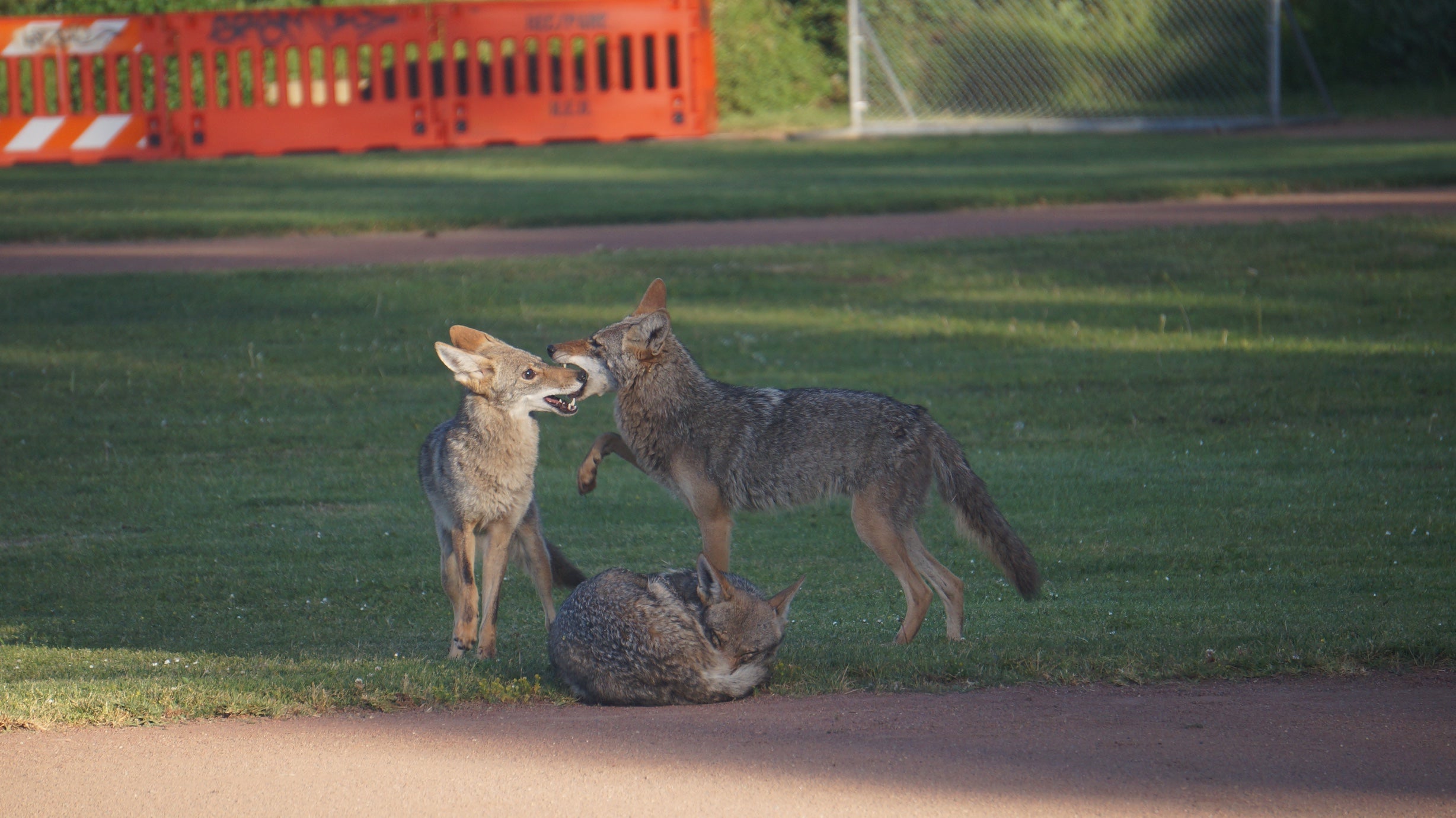
Additional co-authors include Monica Serrano and Stevi Vanderzwan of UC Davis, independent researcher Janet Kessler, and Christopher Schell of UC Berkeley.
The study was funded by a Christine Stevens Wildlife Award from the Animal Welfare Institute, the UC Davis Center for Community and Citizen Science, and additional supporting grants from UC Davis and UC Berkeley. Caspi also acknowledged the contributions of community scientists via iNaturalist. The online network helped lead her to fresh scat samples and even helped her trace a rare lab analysis of fin whale in a coyote’s diet to a nearby beached fin whale recorded on the app.
Subscribe to the Science & Climate newsletter
Media Resources
- Tali Caspi, UC Davis Environmental Science and Policy, tcaspi@ucdavis.edu
- Kat Kerlin, UC Davis News and Media Relations, 530-750-9195 kekerlin@ucdavis.edu
Press kit of images. Download permitted with credit.
